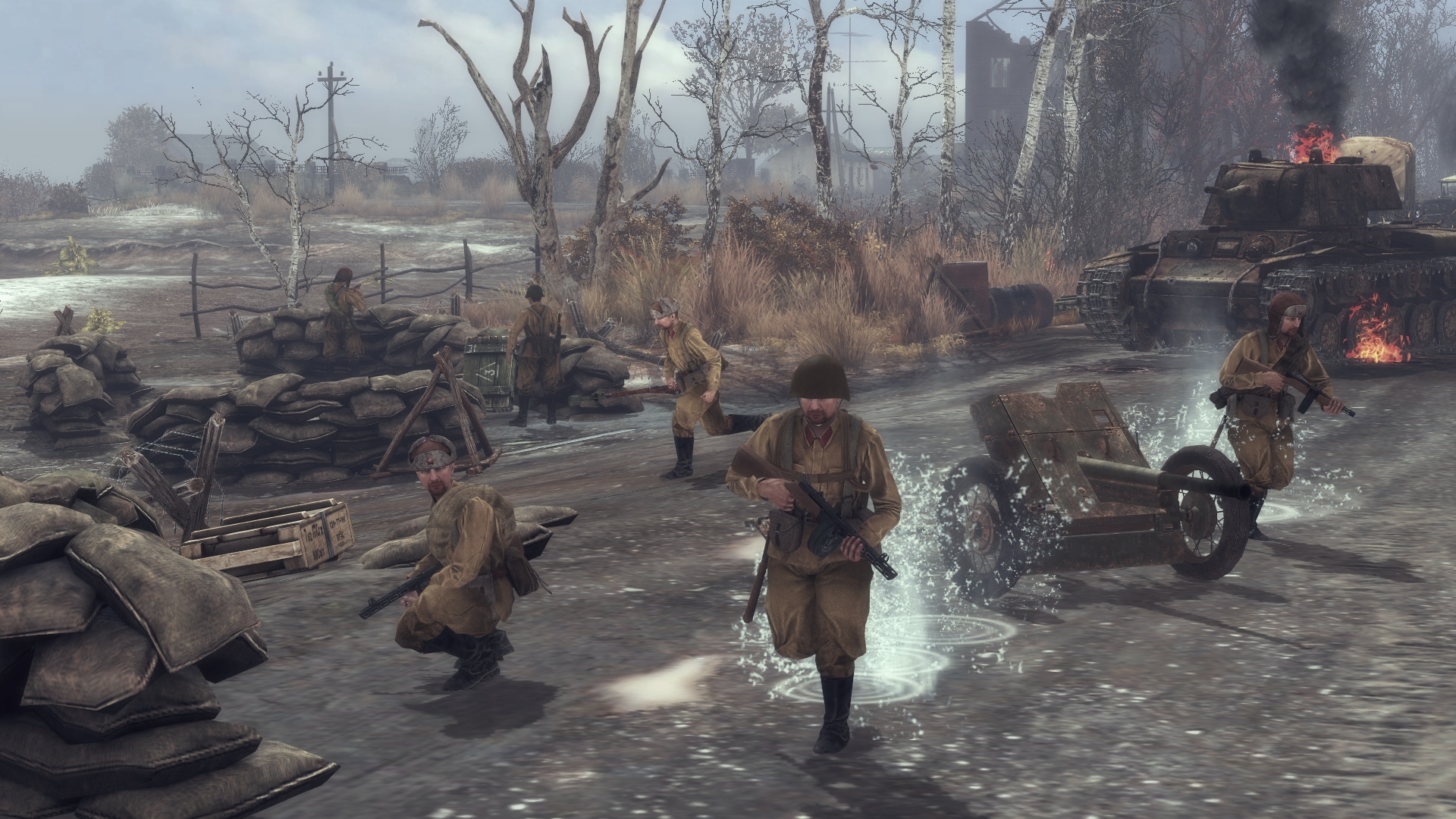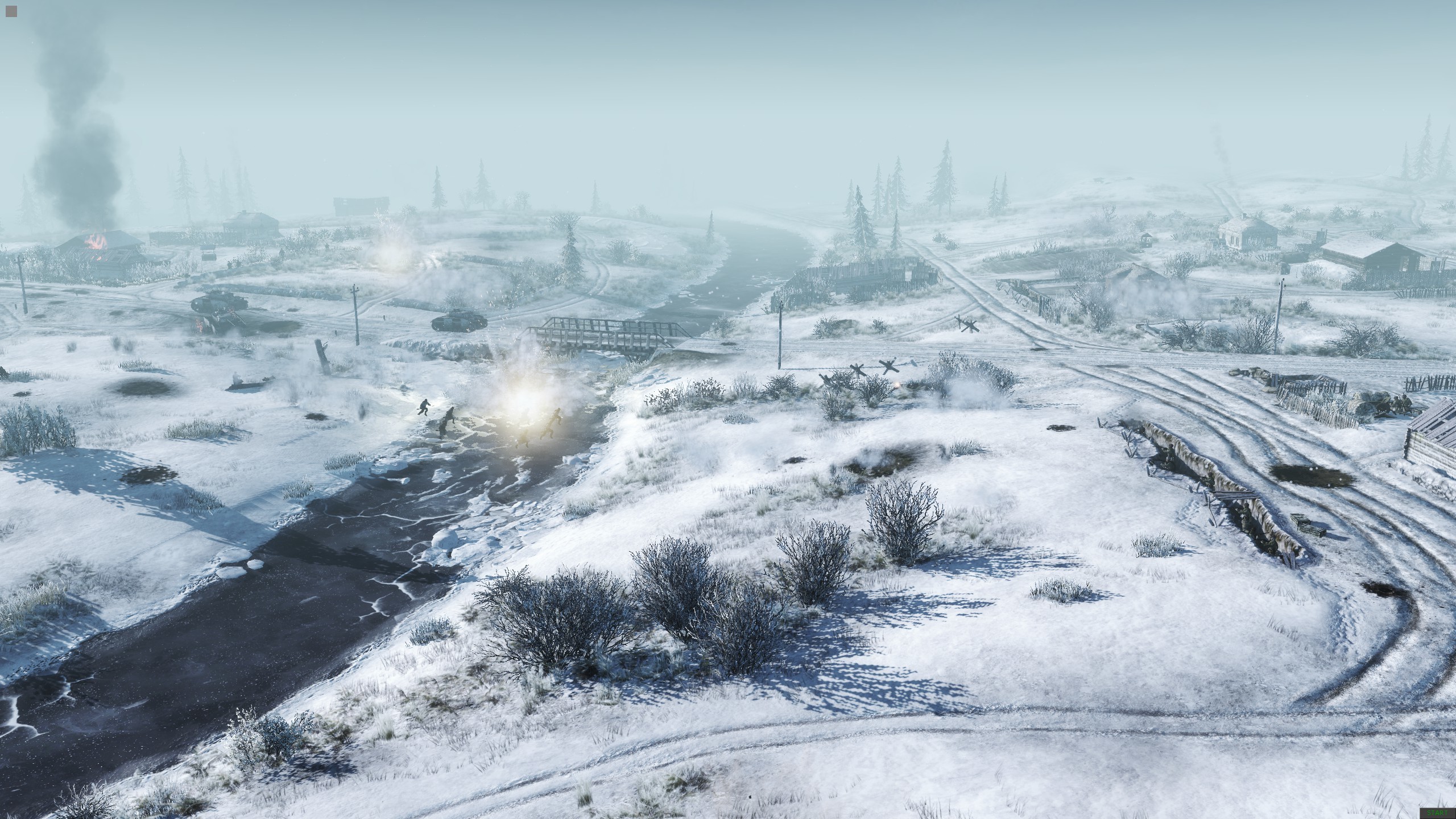Devblog #70: General update
Hello everyone!
We have been very busy in the past weeks, working in all kinds of directions. For instance, we were setting up parts of the process to facilitate future beta testing. We also did some testing of our own. But now it’s time for a development update!
This dev blog is more about general game updates. Of course we want to show you some nice stuff we’ve been working on. Here is a collection of screenshots with the developer’s notes.
Have a good look, we hope you like them!
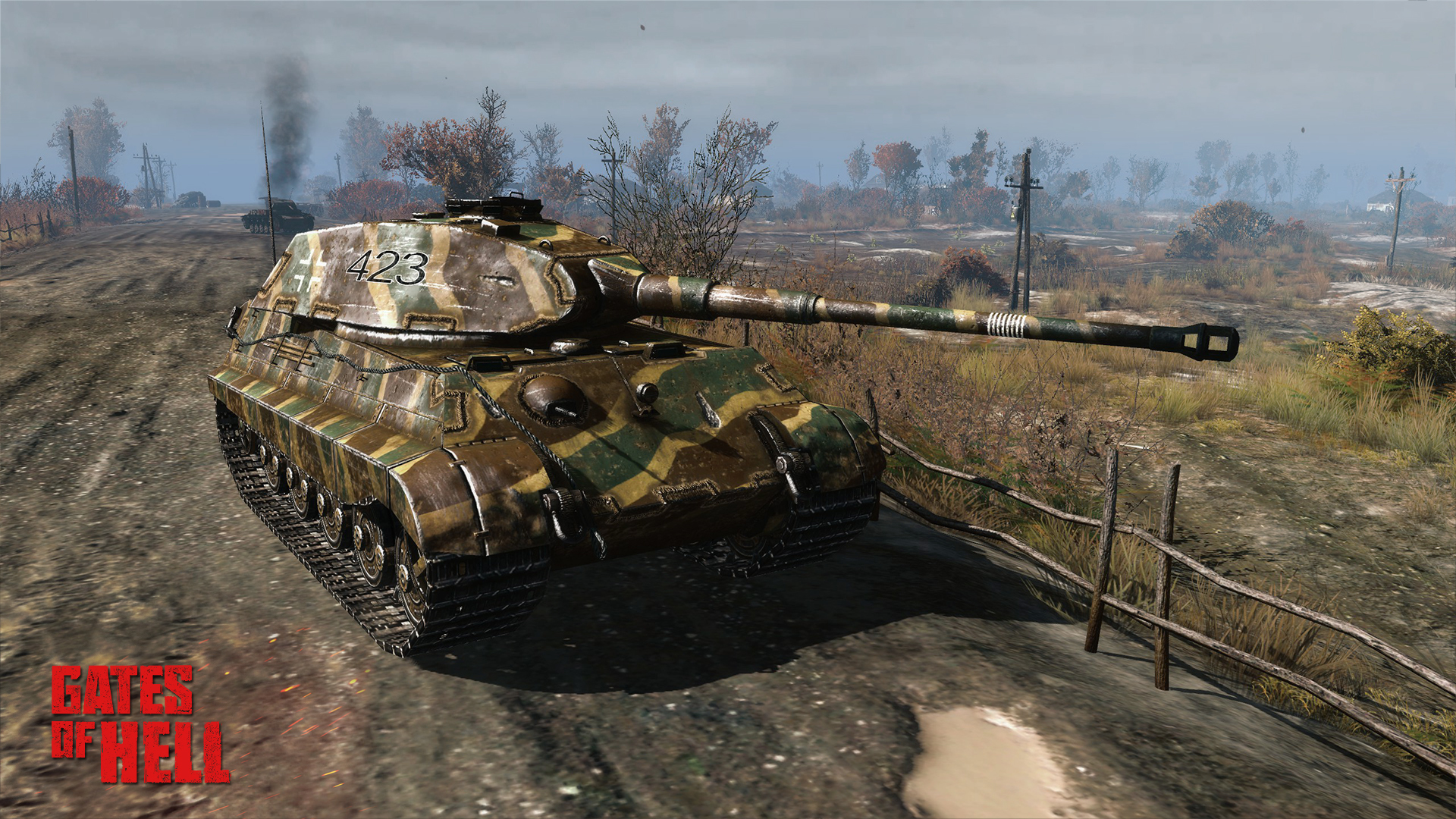 HD
HD
If you take a close look, you can see this particular King Tiger has been in a fight. Two shots from T-34/85’s have scarred the upper glacis plate and one has bounced off the (Pre- production type) turret. It’s gun has been fired a number of times, blackening the barrel around the muzzle brake with burnt gunpowder. It also shows white stripes around the barrel, indicating that this tank has destroyed 8 enemy tanks. The screenie was taken “somewhere in Western Poland”. Note that the trees, bushes and grass are all new.
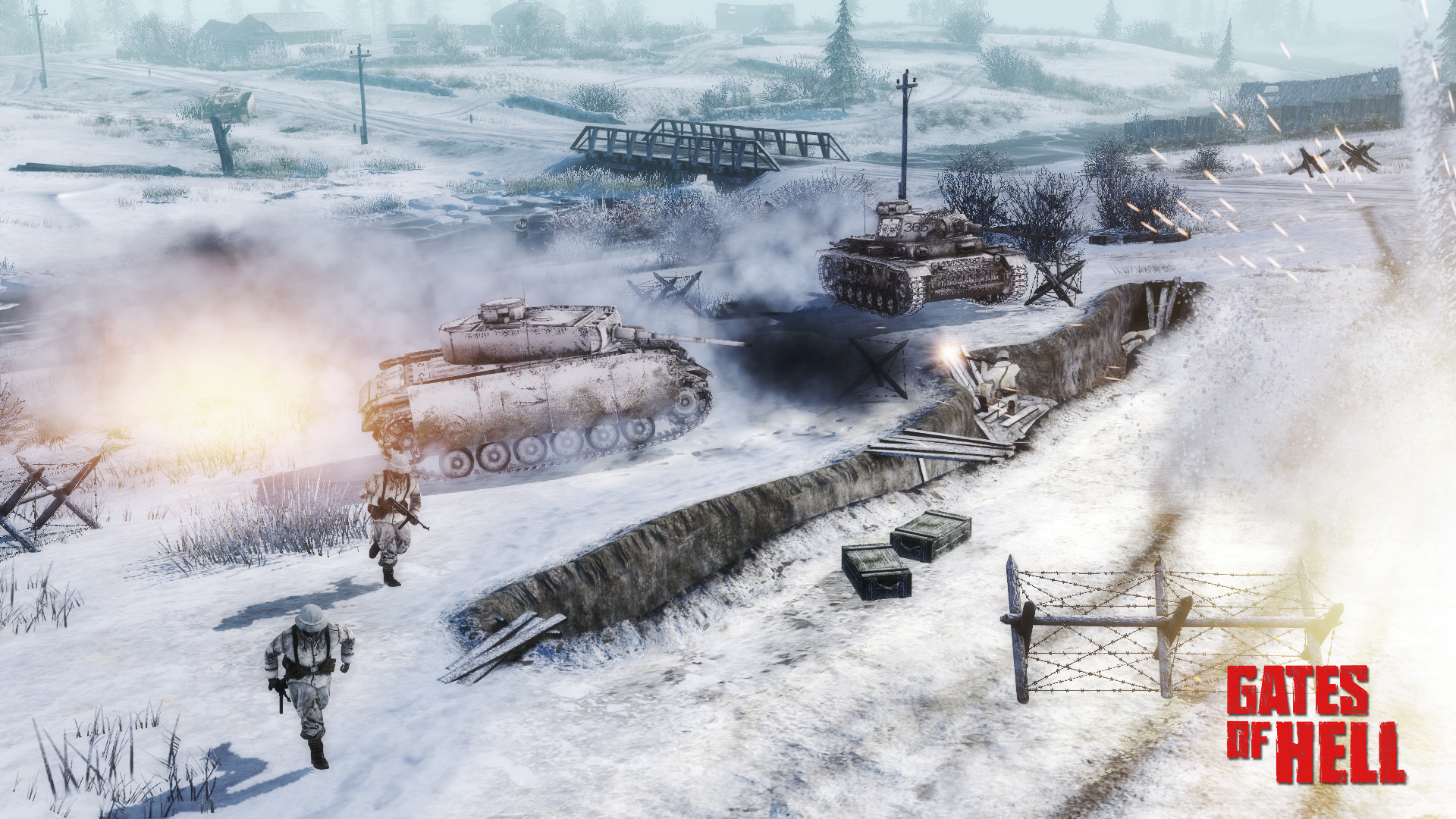 HD
HD
We showed you a number of things from the Wintergewitter scenario in devblog #66. Here’s another scene from that scenario; note that the Panzer III has side skirts (and rather muddy ones). The tracks on the Panzer III were easily damaged - even by Soviet AT rifles - making this model one of the first German tanks to receive “Schürzen” for that reason.
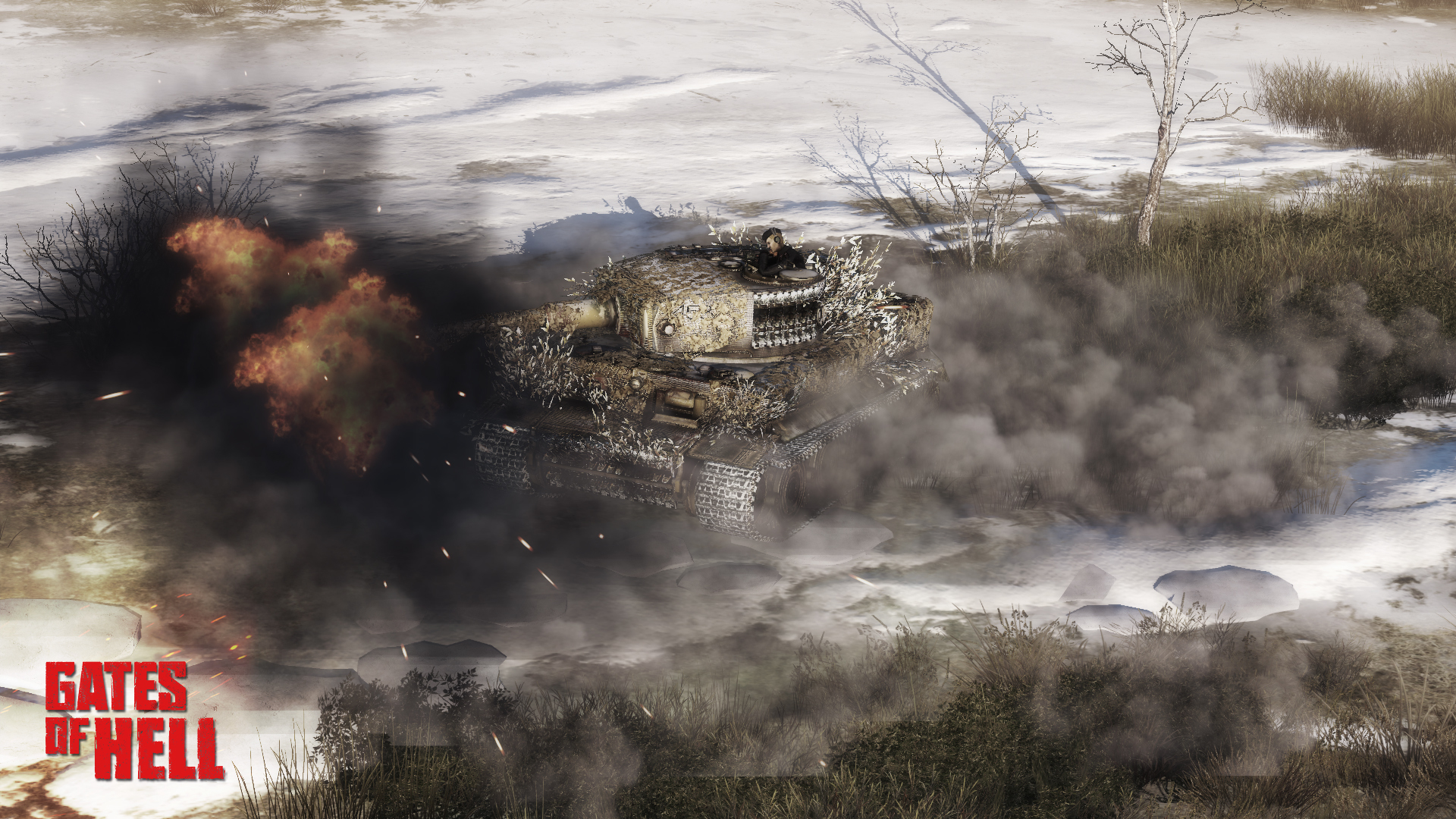 HD
HD
As you can see this Tiger is firing its gun. The flames, like they would in real life, go sideways thanks to the muzzle brake. At the front it’s mostly smoke. The spare track sections on the turret add armor protection in-game, but they can be shot off as well. Note the additional camouflage, mostly attached to the extra bits of track.
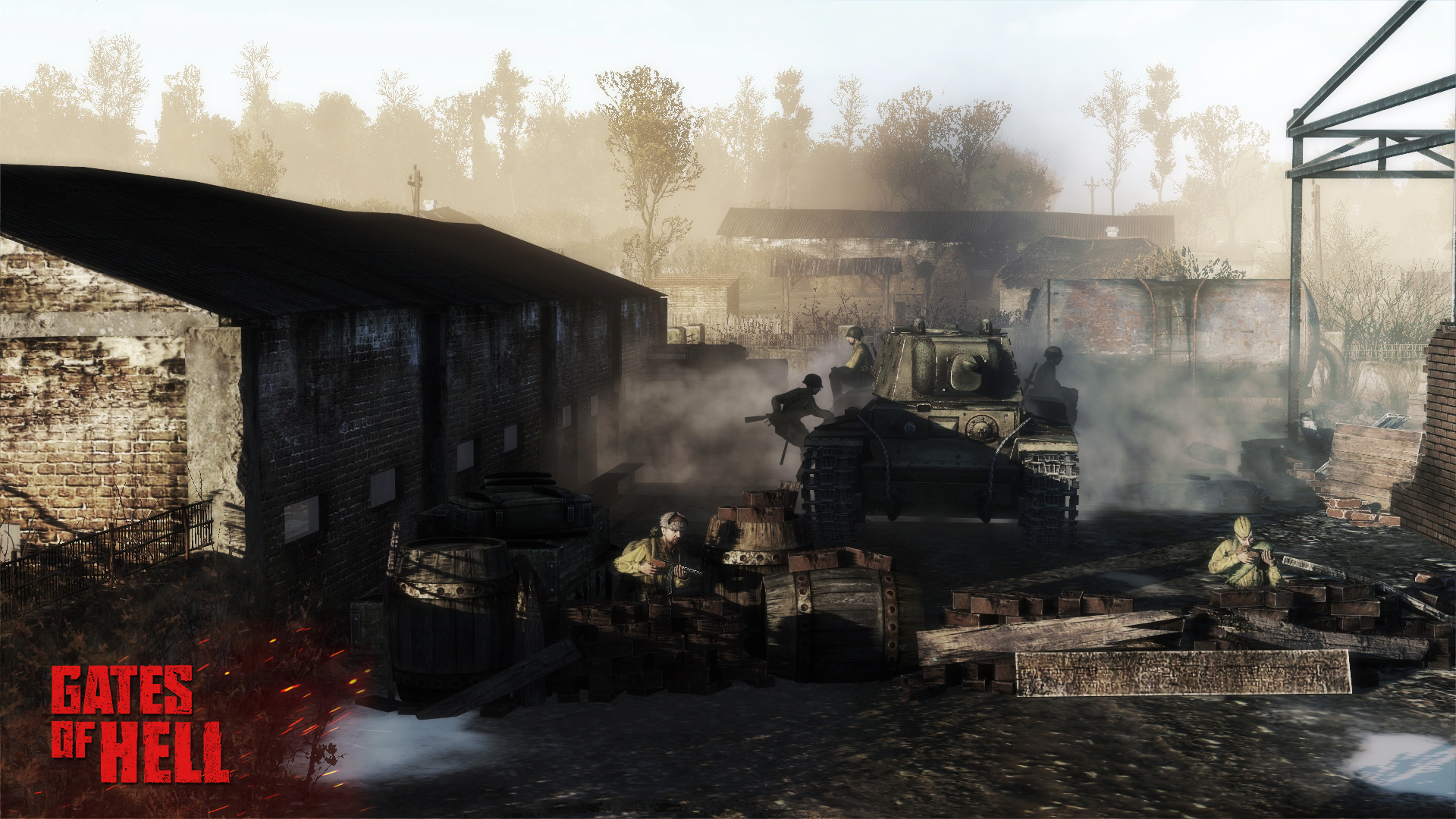 HD
HD
This tank was a nasty surprise to the Germans in 1941. Its extremely heavy armor made it almost impenetrable, at least from the front, for most German AT guns. Some accounts will tell you that a handful of KV tanks could stop a large group of Panzers. In august 1941, a company commander, lieutenant Kolobanov, reported that his company destroyed 42 enemy tanks in 1 day, with just 5 KV tanks. Note that this screenshot clearly shows the infantry riding along, something the KV-1 offers plenty of room for. Also note the bolted armor on the turret.
 HD
HD
Here’s another angle; a maximum of 7 infantry can ride along.
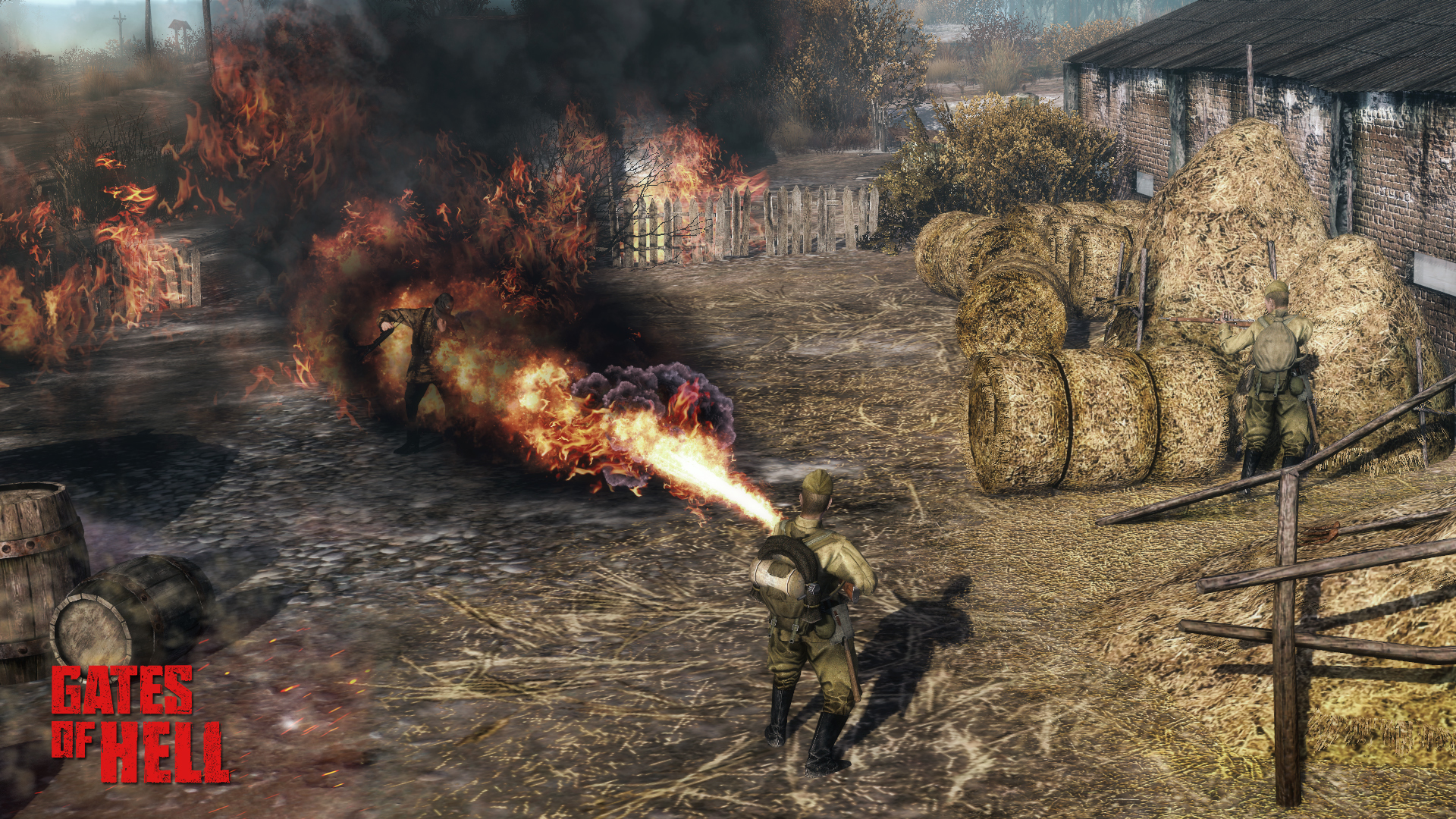 HD
HD
Here’s the Soviet ROKS flamethrower unit. As you see, the flames are one step up, and so is the coding behind it. It will be much harder to burn yourself with the new algorithms, which is something that had always been a nasty problem with flamethrowers in the game engine, and “farshooting” exploits in multiplayer are not possible any more. Its accuracy is also different; your aim will need to be more precise than before. Also note the volume of smoke.
Did you know?
Beta testing (15-20 testers) will be open for applications this summer (summer in Europe) and we are still on schedule to have EA in 2018.
That’s all for now. Do you like what you see? Let us know!
We have been very busy in the past weeks, working in all kinds of directions. For instance, we were setting up parts of the process to facilitate future beta testing. We also did some testing of our own. But now it’s time for a development update!
This dev blog is more about general game updates. Of course we want to show you some nice stuff we’ve been working on. Here is a collection of screenshots with the developer’s notes.
Have a good look, we hope you like them!
King Tiger
 HD
HDIf you take a close look, you can see this particular King Tiger has been in a fight. Two shots from T-34/85’s have scarred the upper glacis plate and one has bounced off the (Pre- production type) turret. It’s gun has been fired a number of times, blackening the barrel around the muzzle brake with burnt gunpowder. It also shows white stripes around the barrel, indicating that this tank has destroyed 8 enemy tanks. The screenie was taken “somewhere in Western Poland”. Note that the trees, bushes and grass are all new.
Wintergewitter
 HD
HDWe showed you a number of things from the Wintergewitter scenario in devblog #66. Here’s another scene from that scenario; note that the Panzer III has side skirts (and rather muddy ones). The tracks on the Panzer III were easily damaged - even by Soviet AT rifles - making this model one of the first German tanks to receive “Schürzen” for that reason.
Tiger
 HD
HDAs you can see this Tiger is firing its gun. The flames, like they would in real life, go sideways thanks to the muzzle brake. At the front it’s mostly smoke. The spare track sections on the turret add armor protection in-game, but they can be shot off as well. Note the additional camouflage, mostly attached to the extra bits of track.
KV-1
 HD
HDThis tank was a nasty surprise to the Germans in 1941. Its extremely heavy armor made it almost impenetrable, at least from the front, for most German AT guns. Some accounts will tell you that a handful of KV tanks could stop a large group of Panzers. In august 1941, a company commander, lieutenant Kolobanov, reported that his company destroyed 42 enemy tanks in 1 day, with just 5 KV tanks. Note that this screenshot clearly shows the infantry riding along, something the KV-1 offers plenty of room for. Also note the bolted armor on the turret.
 HD
HDHere’s another angle; a maximum of 7 infantry can ride along.
Flamethrower unit
 HD
HDHere’s the Soviet ROKS flamethrower unit. As you see, the flames are one step up, and so is the coding behind it. It will be much harder to burn yourself with the new algorithms, which is something that had always been a nasty problem with flamethrowers in the game engine, and “farshooting” exploits in multiplayer are not possible any more. Its accuracy is also different; your aim will need to be more precise than before. Also note the volume of smoke.
Did you know?
- The King Tiger from the tank museum in Saumur, France has a non- historical paint scheme according to some people, so we don’t use its color scheme; however, we will use its sound in-game, as it is the only running example in the world.
- You can find more on our Facebook and VK pages. Like & follow us so you are sure to miss nothing, for instance when we open applications for our beta this summer!
Beta testing (15-20 testers) will be open for applications this summer (summer in Europe) and we are still on schedule to have EA in 2018.
That’s all for now. Do you like what you see? Let us know!
 This photo, said to have been taken in Stalingrad, shows off some accessories nicely (e.g. PPSH drum pouch, spade, shoes with puttee’s), but we can’t trust the colors because they may have been added later.
This photo, said to have been taken in Stalingrad, shows off some accessories nicely (e.g. PPSH drum pouch, spade, shoes with puttee’s), but we can’t trust the colors because they may have been added later. 